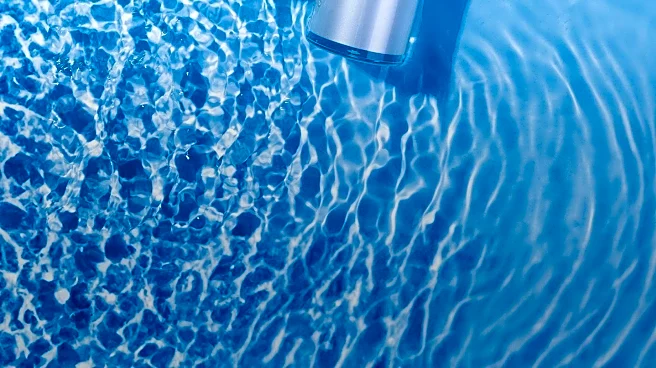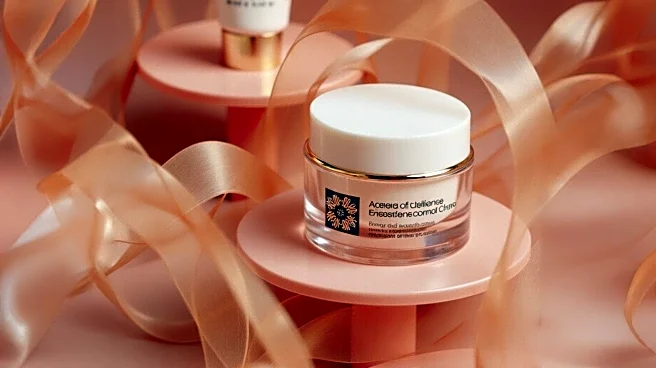What's Happening?
Lactic acid, a gentle chemical exfoliant, is gaining attention for its ability to improve skin texture, remove dead skin cells, and assist in efficient skin cell turnover. Derived from the fermentation
of lactose found in milk, lactic acid is an alpha hydroxy acid (AHA) that is well-tolerated by most skin types. It is particularly beneficial for sensitive and dry skin, offering hydration and brightening effects. Dermatologists emphasize its role in stimulating collagen production, reducing fine lines, and supporting skin barrier health. However, lactic acid should be avoided in cases of compromised skin barriers, such as active eczema or psoriasis flare-ups.
Why It's Important?
The use of lactic acid in skincare products represents a significant advancement in dermatological treatments, offering a solution for various skin concerns including dullness, hyperpigmentation, and dryness. Its ability to promote moisture retention and enhance skin barrier integrity makes it a valuable ingredient for maintaining a healthy complexion. As skin health becomes increasingly prioritized in beauty routines, lactic acid provides a gentle yet effective option for individuals seeking to improve their skin's appearance without irritation. This development could influence consumer choices and product formulations in the skincare industry.
Beyond the Headlines
The growing popularity of lactic acid highlights a broader trend towards using natural and gentle ingredients in skincare. As consumers become more informed about the benefits of AHAs, there is potential for increased demand for products containing lactic acid. This shift may encourage further research into other natural exfoliants and their applications in dermatology. Additionally, the emphasis on skin barrier health reflects a cultural movement towards holistic beauty practices that prioritize long-term skin wellness over temporary cosmetic fixes.











